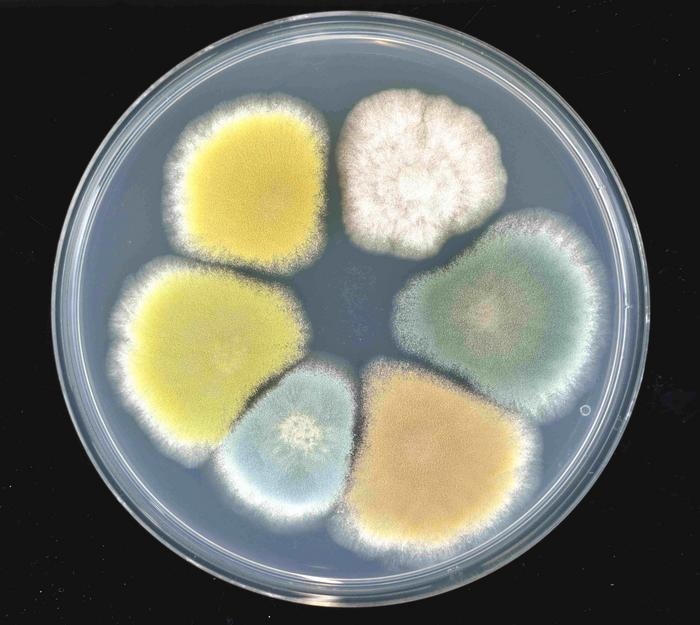Scientists at the University of Nottingham have figured out how to make blue cheese in a variety of colors.
 Color derivative. Image Credit: University of Nottingham
Color derivative. Image Credit: University of Nottingham
Experts from the School of Life Sciences were able to develop a range of fungal strains that could be used to produce cheese with colors ranging from white to yellow-green to red-brown-pink and light and dark blues after learning how the traditional blue-green veining is produced.
The findings of the study are published in the journal NPJ Science of Food.
Penicillium roqueforti is a fungus that is used all over the world to produce blue-veined cheeses like Gorgonzola, Stilton, and Roquefort. The distinct blue-green hue and taste are derived from pigmented spores that are produced by fungal growth.
The research team, under the direction of Dr Paul Dyer, Professor of Fungal Biology, discovered how the blue-green pigment is made through a combination of targeted gene deletions, heterologous gene expression, and bioinformatics.
The blue pigments are formed by a biochemical pathway that begins as white and progresses to yellow-green, reddish-brown, pink, dark brown, light blue, and finally dark blue-green.
The scientists were then able to “block” the pathway at specific locations using some traditional, non-genetically modified food safe techniques, producing strains with novel colors that could be employed in the manufacturing of cheese.
We’ve been interested in cheese fungi for over 10 years and traditionally when you develop mold-ripened cheeses, you get blue cheeses such as Stilton, Roquefort, and Gorgonzola which use fixed strains of fungi that are blue-green in color. We wanted to see if we could develop new strains with new flavors and appearances. The way we went about that was to induce sexual reproduction in the fungus, so for the first time we were able to generate a wide range of strains which had novel flavors including attractive new mild and intense tastes. We then made new color versions of some of these novel strains.”
Dr Paul Dyer, Professor, Fungal Biology, University of Nottingham
After creating the cheese using the new color strains, the team used diagnostic tools in the lab to determine the potential flavor.
Dr Dyer says, “We found that the taste was very similar to the original blue strains from which they were derived. There were subtle differences but not very much. The interesting part was that once we went on to make some cheese, we then did some taste trials with volunteers from across the wider University, and we found that when people were trying the lighter colored strains they thought they tasted more mild. Whereas they thought the darker strain had a more intense flavor.”
Similarly, with the more reddish brown and a light green one, people thought they had a fruity tangy element to them - whereas according to the lab instruments they were very similar in flavor. This shows that people do perceive taste not only from what they taste but also by what they see.”
Dr Paul Dyer, Professor, Fungal Biology, University of Nottingham
To produce the new color variations of blue cheese, the team - which included lead postgraduate student Matt Cleere - will investigate collaborating with cheese producers in Nottinghamshire and Scotland. To determine whether the strains can be commercialized, a university spin-out company named Myconeos has already been established.
Personally, I think it will give people a really satisfying sensorial feeling eating these new cheeses and hopefully might attract some new people into the market.”
Dr. Paul Dyer, Professor, Fungal Biology, University of Nottingham
Source:
Journal reference:
Cleere, M. M., et.al (2024) New colors for old in the blue-cheese fungus Penicillium roqueforti. NPJ Science of Food. doi.org/10.1038/s41538-023-00244-9